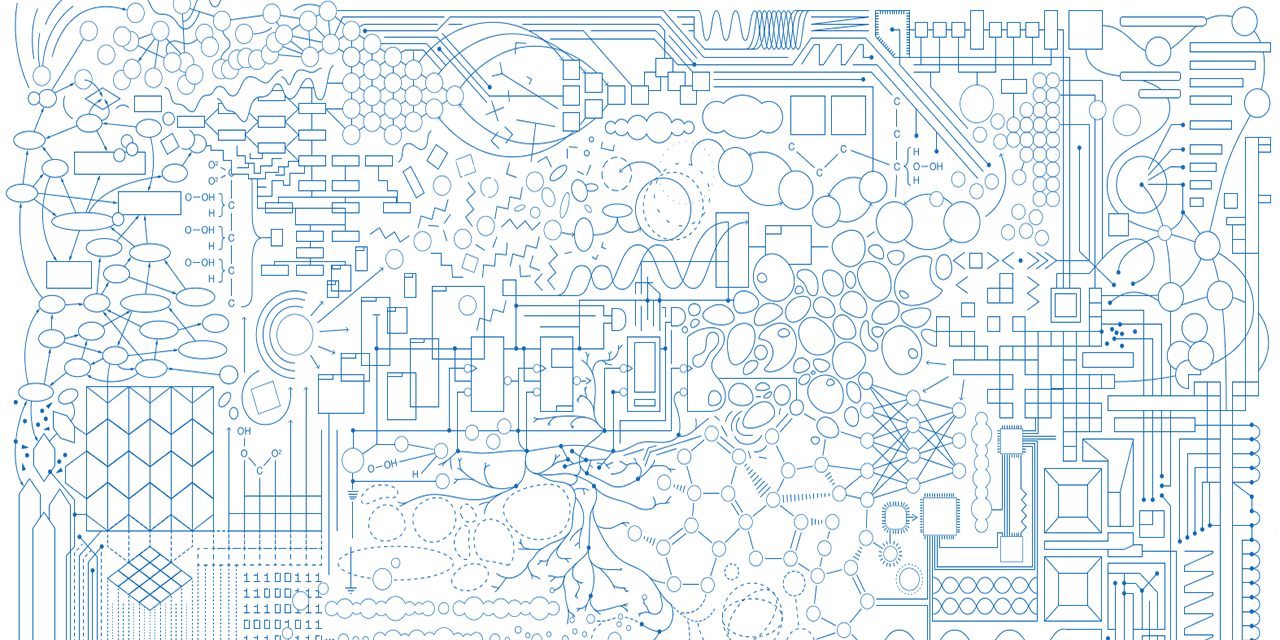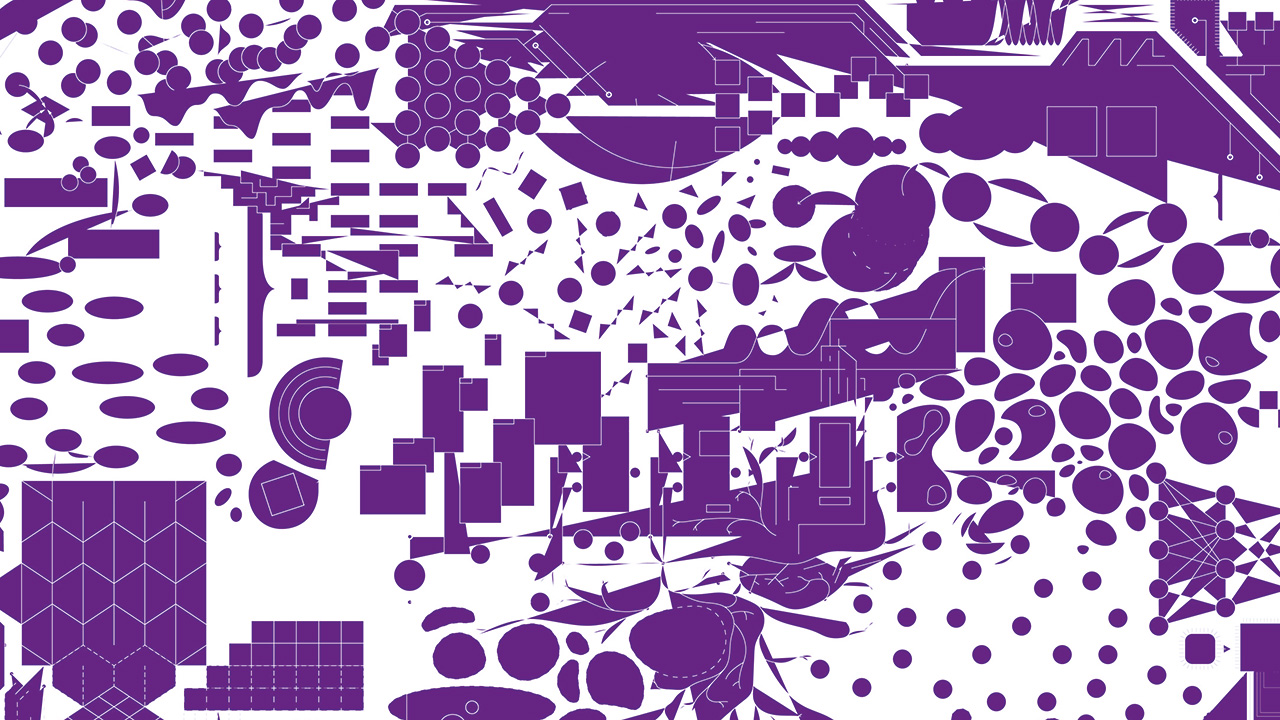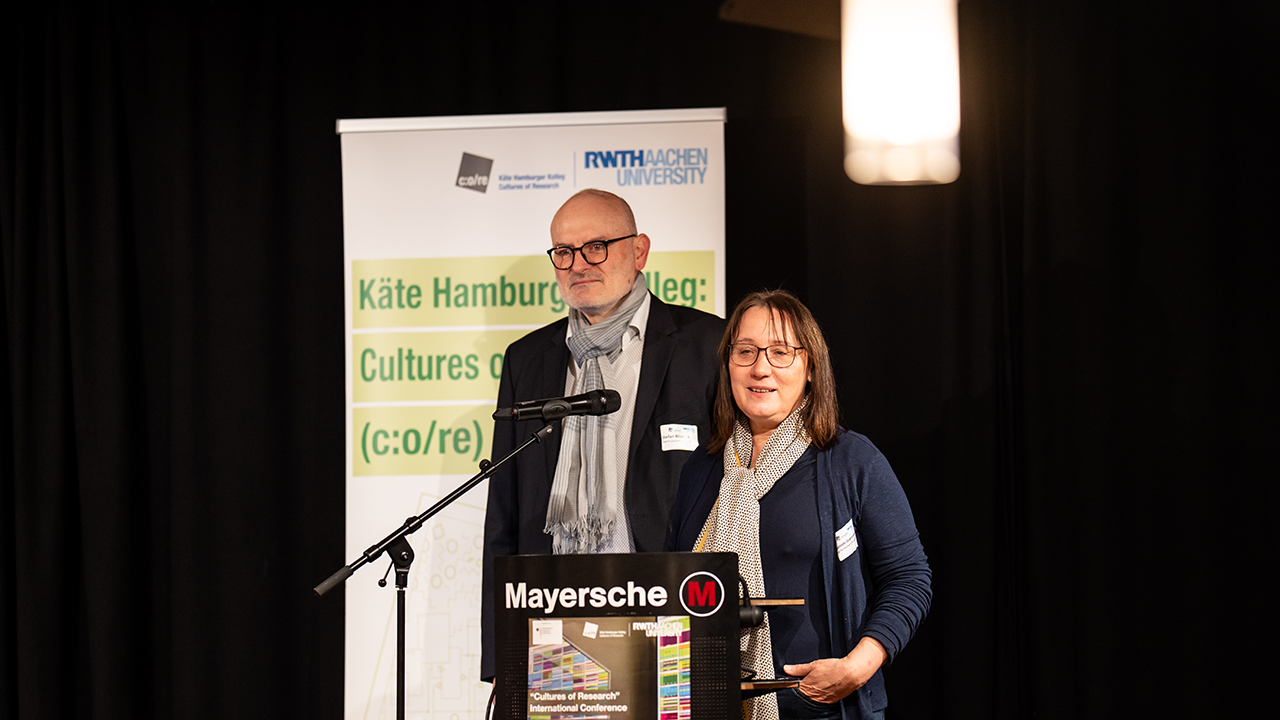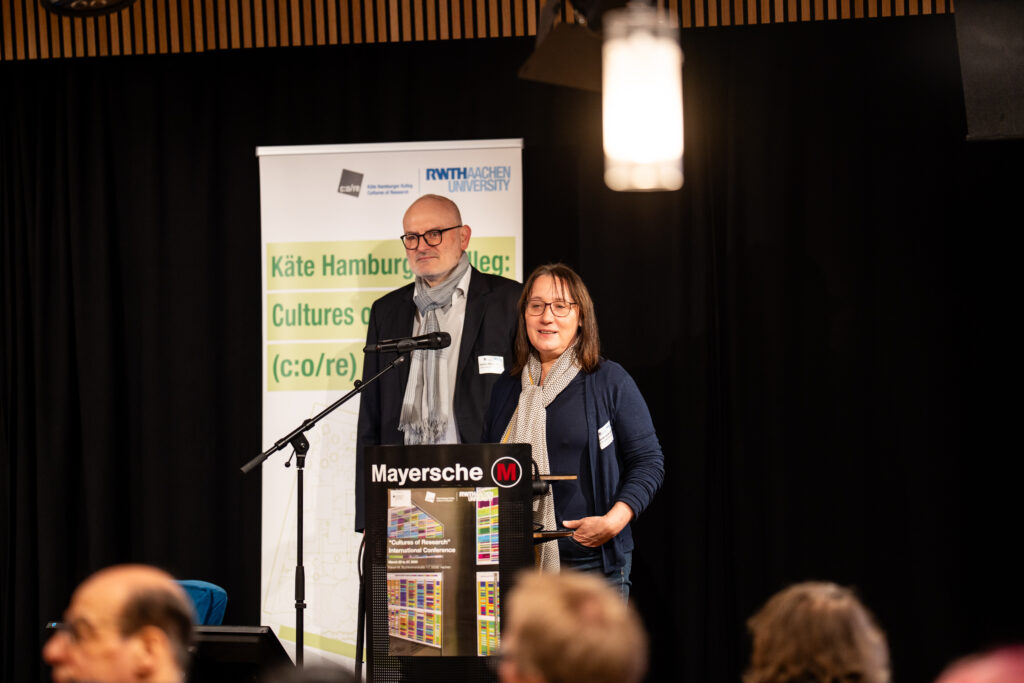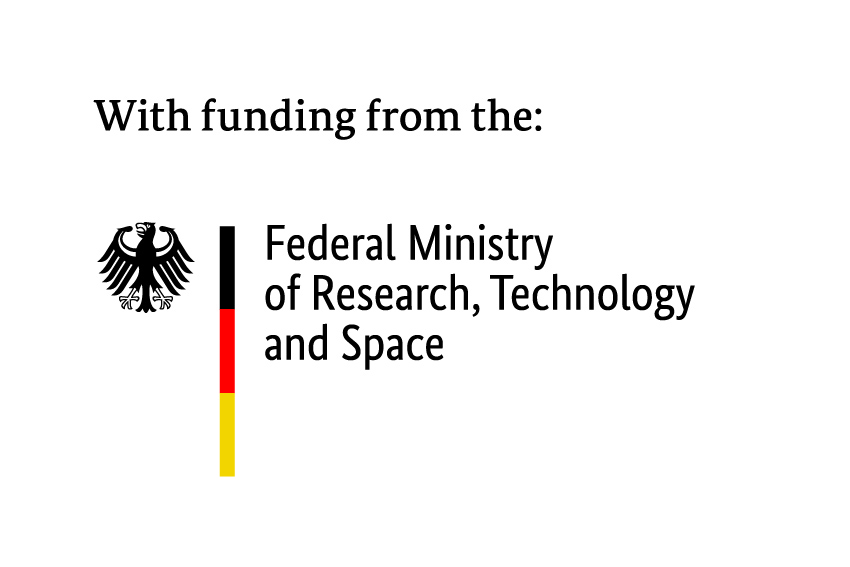European Dialogue: Freedom of Research and the Future of Europe in Times of Uncertainty

JANA HAMBITZER
During a day-long symposium, part of the Freedom of Research: A European Summit – Science in Times of Uncertainty, speakers and panelists explored various aspects of freedom of research and the future of Europe in the context of ongoing global crises and conflicts.
“We should not think that freedom is self-evident. Freedom is at danger in every moment, and it is fragile”. With these cautioning words, Prof. Dr Thomas Prefi, Chairman of the Charlemagne Prize Foundation, welcomed the participants of the symposium on freedom of research, which took place at the forum M in the city center of Aachen on November 5, 2024.

As part of the Freedom of Research: A European Summit – Research in Times of Uncertainty, the Foundation of the International Charlemagne Prize of Aachen, the Knowledge Hub and the Käte Hamburger Kolleg: Cultures of Research (c:o/re) of RWTH Aachen University jointly provided an interdisciplinary platform to discuss the crucial role of freedom in scientific, social and political contexts concerning the future of Europe with researchers, policymakers, business representatives and the public.
The aim was to critically explore different forms and practices of implementing freedom of research in line with European principles and in support of democratic governance and societal benefits. The thematic focus of the symposium was on dealing with the numerous complex crises of our time – from military conflicts to right-wing populism – as well as addressing challenges associated with new technologies such as AI and the metaverse.
Humanity and Collaboration in the Age of Emerging Technologies
The strategic importance of freedom in fostering innovation and maintaining democratic values in a globally competitive landscape was emphasized by Wibke Reincke, Senior Director and Head of Public Policy at Novo Nordisk, and Dr Jakob Greiner, Vice President of European Affairs at Deutsche Telekom AG. From an industry perspective, both speakers underscored the need for open societies that invest in innovation to ensure the continuity and growth of democratic principles.
The emergence of the metaverse and other cutting-edge technologies were discussed by Jennifer Baker, Reporter and EU Tech Influencer 2019, Elena Bascone, Charlemagne Prize Fellow 2023/24, Nadina Iacob, Digital Economy Consultant at the World Bank, and Rebekka Weiß, LL.M., Head of Regulatory Policy, Senior Manager Government Affairs, Microsoft Germany. The panelists pointed out the essential role of human-centered approaches and international collaboration in addressing the ethical and societal challenges associated with new technologies, and in shaping the metaverse according to European ideals.

The inherent tension between technological progress and the preservation of research freedom was highlighted by Prof. Dr Gabriele Gramelsberger, Director of the Käte Hamburger Kolleg: Cultures of Research (c:o/re), who raised the question of how AI is changing research. Prof. Dr Holger Hoos, Alexander von Humboldt Professor in AI and Executive Director of the AI Center at RWTH Aachen University, stated that publicly funded academic institutions must remain free from any influence of money and market pressure to foster cutting-edge research motivated solely by intellectual curiosity. Prof. Dr Benjamin Paaßen, Junior Professor for Knowledge Representation and Machine Learning at Bielefeld University, further argued that AI in research and education should only be used as a tool to complement human capabilities, rather than replace them.
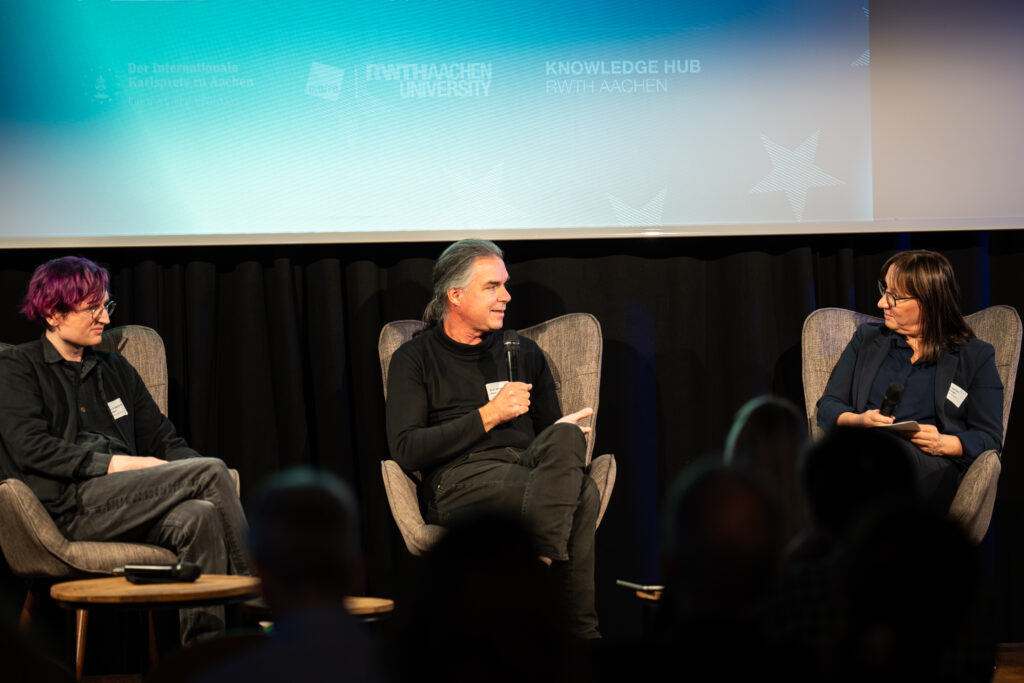
Conflicts over Academic Freedom and the Role of Universities
The de facto implementation of academic freedom worldwide was presented by Dr Lars Lott from the research project Academic Freedom Index at the Friedrich-Alexander-University Erlangen-Nuremberg. In a 50-year comparison, from 1973 to 2023, he illustrated a significant improvement of academic freedom in countries worldwide. However, looking from an individual perspective, the opposite is true: almost half of the world’s population lives in countries where academic freedom is severely restricted due to the rise of populist and authoritarian regimes.
Dr Dominik Brenner from the Central European University in Vienna reported firsthand on the forced relocation of the Central European University (CEU) from Budapest to Vienna and noted that such restrictions of academic freedom are an integral part of illiberal policies. Dr. Ece Cihan Ertem from the University of Vienna provided another example of increasing authoritarianism in academic institutions by discussing the suppression of academic freedom at Turkey’s Bogazici University by the government. Prof. Dr Carsten Reinhardt from Bielefeld University warned of the modern efforts in our societies to restrict academic freedom through fake news or alternative facts. From a historical perspective, these are fundamental attacks destroying the basis of truth finding, referring to similar developments during the Nazi regime in Germany.
Another pressing issue, the precariousness of academic employment in Germany, was highlighted by Dr Kristin Eichhorn from the University of Stuttgart and co-founder of the #IchBinHanna initiative, protesting against academic labor reforms that disadvantage early and mid-career researchers. She pointed out that the majority of faculty work on fixed-term contracts, which significantly restricts researchers’ ability to exercise their fundamental right to academic freedom due to tendencies to suppress both structural and intellectual criticism.
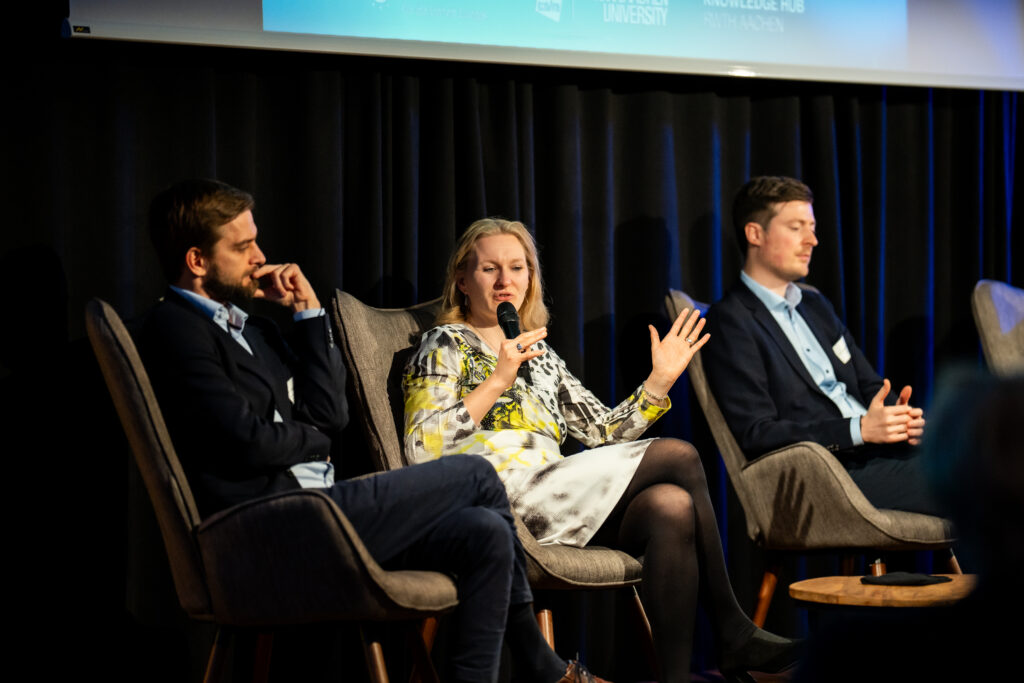
How to deal with these challenges? Prof. Dr Stefan Böschen, Director of the Käte Hamburger Kolleg: Cultures of Research (c:o/re), stressed that political assumptions and politically motivated conflicts can make academic discourse more difficult. However, it is important to foster dialogue once a common basis for discussion has been established. Frank Albrecht from the Alexander von Humboldt Foundation advocated for greater efforts in science diplomacy and the vital role of academic institutions in international relations. Miranda Loli from the Robert Schuman Center for Advanced Studies, the European University Institute in Florence, and Charlemagne Prize Fellow 2023/24, emphasized the need for universities to act as reflexive communities that engage critically with the processes that shape academic freedom while recognizing their potential as informal diplomatic actors.

Research as a Basis for European Conflict Resolution
The intersection of academic freedom and conflict resolution was explored in a discussion between Dr Sven Koopmans, EU Special Representative for the Middle East Peace Process, and Drs René van der Linden, former President of the Parliamentary Assembly of the Council of Europe and Dutch diplomat, moderated by Dr Mayssoun Zein Al Din, Managing Director of the North Rhine-Westphalian Academy for International Politics in Bonn. They argued that research is essential for understanding and resolving global conflicts and emphasized the role of the EU as a key player in international peace efforts. The two discussed the challenges of assessing conflicts from a European perspective, particularly the differing opinions of member states, and highlighted the EU’s economic power as a crucial factor in international peace efforts. Dr Koopmans emphasized the importance of an optimistic outlook, stating: “Let’s work on the basis – that there is a peace that we may one day achieve. It maybe sounds very difficult […], but you know: Defeat is not a strategy for success.”
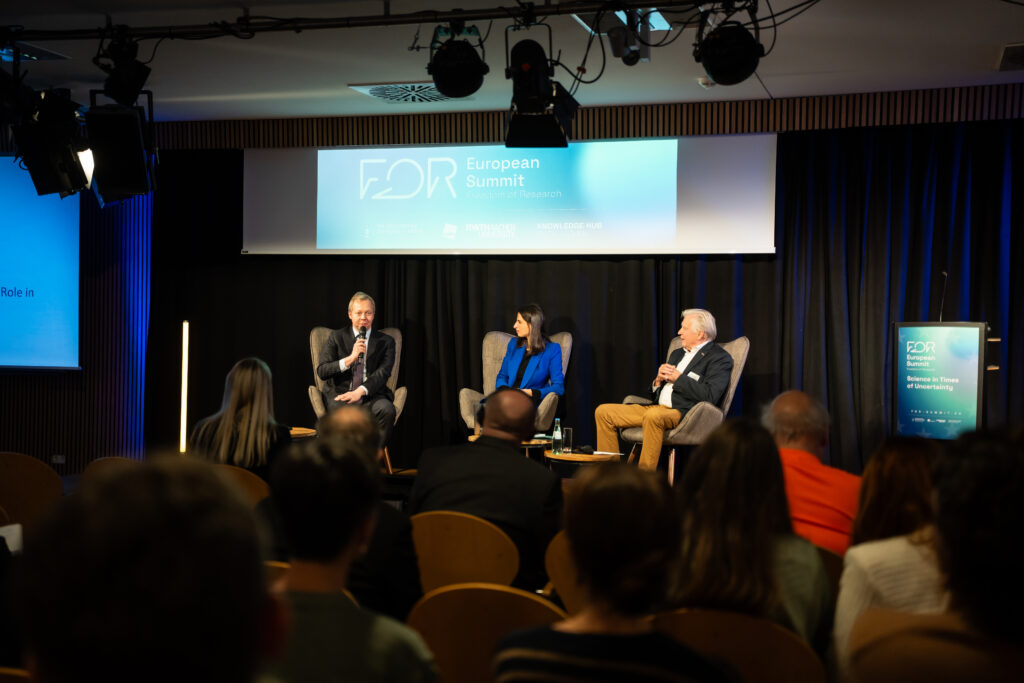
The symposium underlined the critical importance of protecting freedom in research, science, and diplomacy. The discussions made clear that academic freedom is neither given nor a permanent state; rather, it requires continuous vigilance and proactive efforts to preserve. The collective message from the symposium reinforced that science in times of uncertainty can be navigated through regulation and governance for innovation, a strong European and international academic community, and independent universities as safe places to ensure the future of a democratic, secure and progressive Europe.
Photo Credits: Christian van’t Hoen
Special Issue: From Automation to Autonomy: Human Machine Relations in the Age of Artificial Intelligence

Together with Frank Piller (RWTH Aachen University), Caja Thimm and Maximilian Mayer (Rheinische Friedrich-Wilhelms-Universität Bonn), KHK c:o/re director Gabriele Gramelsberger co-edited a special issue of the journal “Human Machine Communications” on the shift from automation to autonomy. The guest-edited issue just appeared online.
As machines today gain capabilities that resemble autonomous agency (think of AI agents, for example), the line between human and machine autonomy is blurring, challenging traditional concepts of agency, control, and independence.
In this special issue, the authors explore the complexities of attributing autonomy to machines and AI systems. Philosophical, sociological, and technical approaches converge to explore how emerging forms of machine autonomy impact human agency, freedom, and decision-making, with applications ranging from autonomous vehicles to digital assistants and military drones.
The central topic is the growing tension between viewing autonomy as a positive attribute and the concerns about diminishing human authority in the face of increasingly independent technologies.
In the opening essay, the authors ask for an integrated understanding of autonomy as both an individual and collective construct, reflecting the highly complex and quickly evolving nature of current societal, ethical, and technological challenges.
You can find the paper on this website, the full issue follwing this link.
New Publication in Nature Computational Science: “Software is Ubiquitous Yet Overlooked”

A group of fourteen scientists, most of whom work or have worked at the KHK c:o/re, have published an article entitled “Software is ubiquitous yet overlooked” in Nature Computational Science about the lack of attention paid to software.
Software is ubiquitous in science, and yet it is overlooked everywhere. At a time when the scientific world (and beyond) is talking about code, algorithms or artificial intelligence, software appears in the discourse as just another semantic quibble. But many facets of software, such as questions about user licenses or file formats, are not part of the definition of code or algorithm.
Interdisciplinarity as the key to understanding
In their paper, the authors argue for bringing together perspectives on software from different academic (e.g. computational sciences, humanities and social sciences) and professional (e.g. development, use, maintenance, etc.) fields to uncover the tensions between the different meanings of software. Case studies in different scientific fields, including older software developments, will help to improve the understanding of software.
A simple example: Excel autocorrection
An example from bioinformatics: In the supplementary materials of bioinformatics publications, the preferred format for long gene lists surprisingly is the Microsoft .xls format. However, Excel automatically converts the designation MARCH1 for the gene “Membrane Associated Ring-CH-type finger 1” into a date. This distorts the listed data. A publication from 2021 reminds us that the problem was recognized (and published) as early as 2004, but never disappeared. A fifth of publications dealing with gene lists contain these errors.
Researchers could use tabulated plain text (.csv files), but they don’t because they are used to spreadsheets. However, these are not designed for this type of processing of large amounts of data. Another reason is that many scientific practices employ the widespread use of the Microsoft software suite. It took twenty years for the researchers to finally rename the genes in question. Only recently has Microsoft Excel, a thirty-year-old software package, been able to de-automate the conversion of a character string into a date.
Research on practices and transformations in science and technology
The authors of the article look at the topic of software in scientific research from the perspectives of computational science, history, philosophy of science, semiotics, science and technology studies (STS) and media studies. They work at various universities around the world. Most of them were fellows at the KHK c:o/re, where the idea for the joint publication was born during the workshop “Engineering Practices Workshop: New Horizons in the Social Study of Science and Software“.
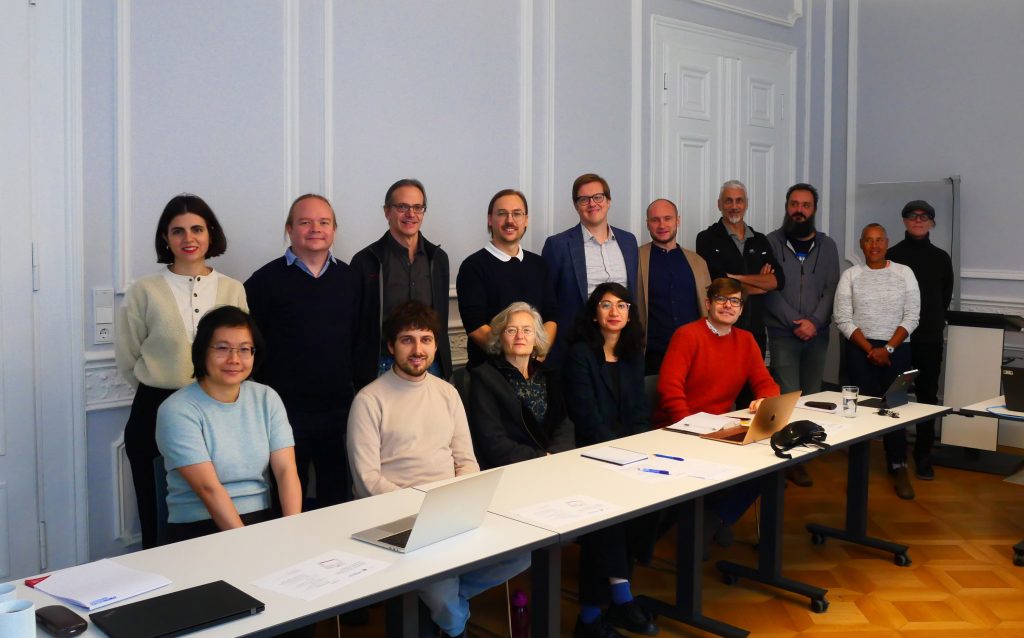
Lifelikeness… from scratch: Director Gabriele Gramelsberger opens the new c:o/re lecture series
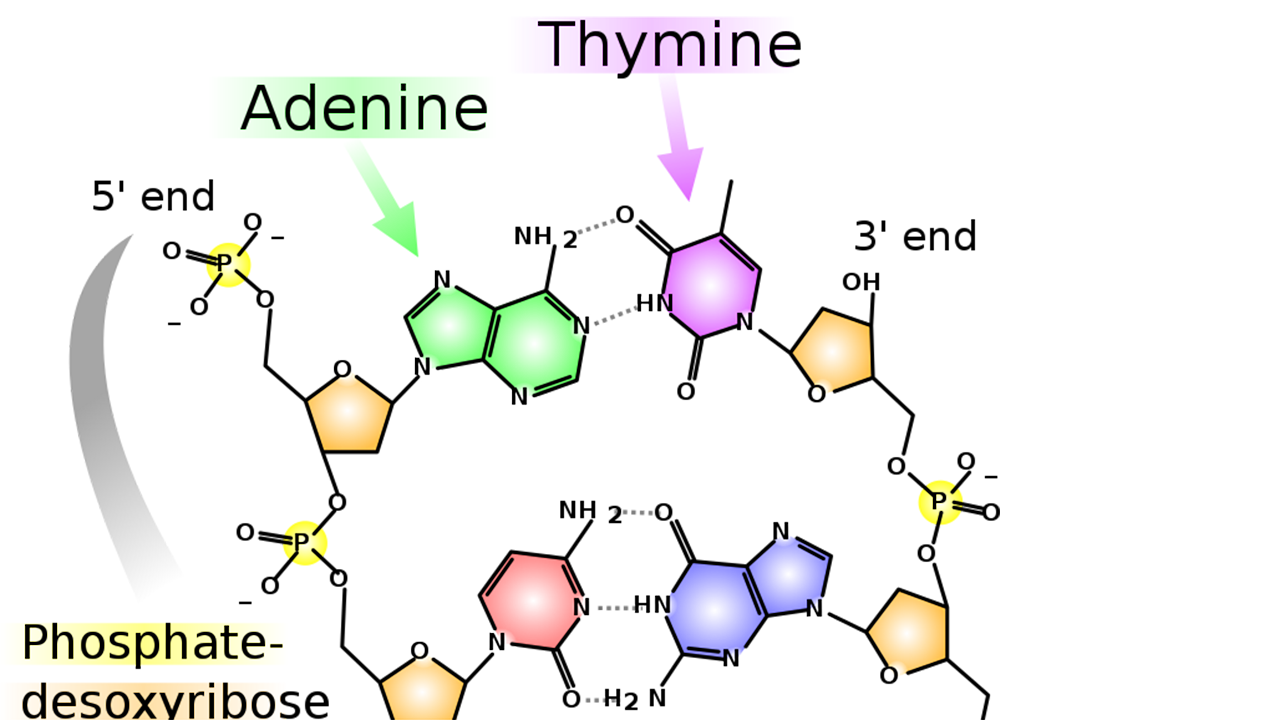
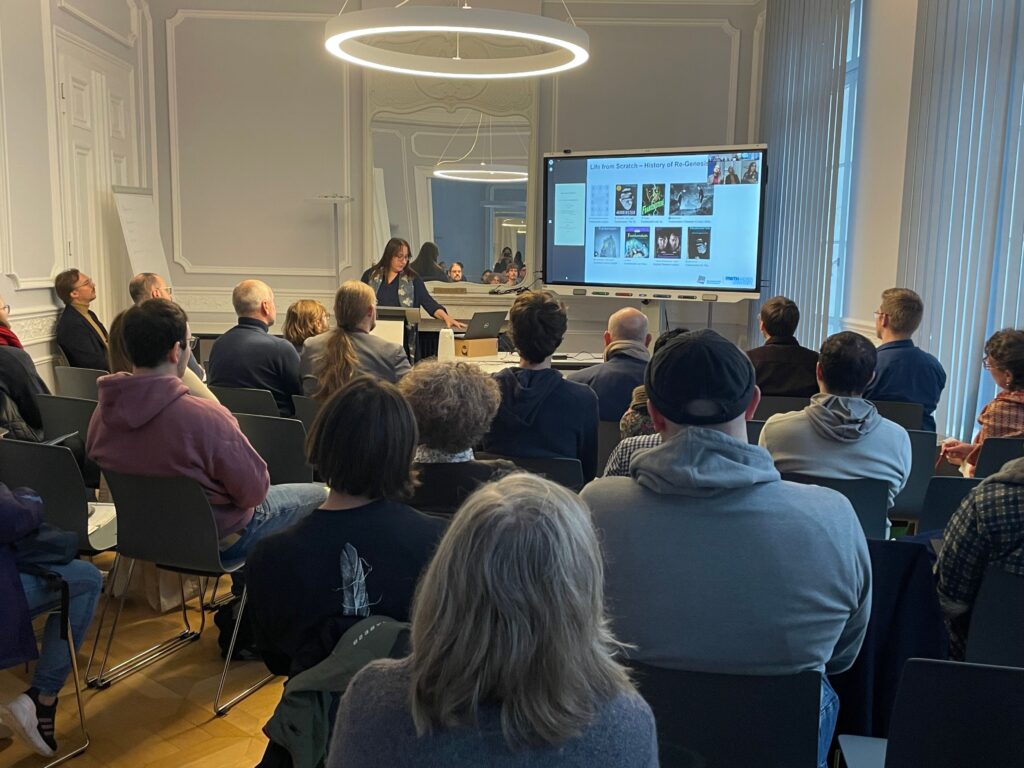
On October 25th, Professor Gabriele Gramelsberger, one of the two c:o/re directors, gave the first talk of the 2023/2024 c:o/re lecture series, which focuses on the slippery but important notion of lifelikeness. The title of her talk, Life from scratch announces an interesting lecture series bringing together arguments from the life sciences to philosophy and all the way to engineering and computational science, where we can but expect the best practice of academic traditions: controversy, that unavoidable result of free and critical thinking.
This semester’s c:o/re lecture series is also part of the Projekt “Leonardo”: Interdisciplinary Teaching for Creative Minds . This project offers interdisciplinary courses on social challenges broadly, offering RWTH Aachen University students from many disciplines the possibility to learn about the eclectic and interdisciplinary work of researchers from various departments.
In this way, c:o/re contributes to the teaching offer of and inter-departmental dialogue at RWTH Aachen University. Debating lifelikeness, as a topic emerging at the interface of the humanities and social sciences, natural sciences and engineering, is one of the contributions that c:o/re brings to foster dialogue across faculties and bring together local scholars and its research fellows.

In this first talk of the series, Professor Gramelsberger inspired a lively discussion among c:o/re researchers and colleagues and students from many departments across RWTH Aachen University. She offered a broadly informative and encompassing overview of synthetic biology, with a focus on the enduring human fascination to solve the puzzle of life, such as pursued currently in astrobiology.
First, Professor Gramelsberger took the audience on a journey through the history of biology, particularly as seen from the contemporary vantage point of ReGenesis. The talk proceeded from early efforts to obtain (a)biogenesis in laboratories to contemporary experiments and efforts, such as revolving around the concept of the domain Synthetica.
Introducing the main guiding concepts, such as abiogenesis, Professor Gramelsberger explained that the ideal to create life is, probably, as old as humanity. She pointed to the enduring cultural fascination with creating life, as displayed in novels like Mary Shelley’s Frankenstein (1818) and films like Fritz Lang’s Metropolis (1927), or in Jewish mythical folklore of the Golem, the animated mythical creature created from mud that is said to have roamed 16th-century Prague. Cultural imaginaries of humans creating new life have taken inspiration, of course, from state-of-the-art scientific undertakings. For example, Mary Shelley likely took inspiration from Luigi Galvani’s experiments in the 1780s. Much later, in 1952, the type of thinking falling under the label electric spark theory was put to the test in the Miller-Urey experiment (see Miller 1953), with impressive results. Researchers observed the formation of amino acids by applying electricity to water (H2O), methane (CH4), ammonia (NH3) and hydrogen (H2), a setting meant to simulate the conditions, as thought at the time, of the prebiotic Earth atmosphere.

Having presented these ideas to the students, Professor Gramelsberger set the stage for an informative overview of the intellectual history covering the works of Jacques Loeb (1852-1924), Alfonso Herrera (1868-1942) and Stéphane Leduc (1853-1939).
An interesting realization that this history reveals is that the biological problem of life keeps slipping. Every time when biological science finds the solution to what it construed as the question of life, it reveals that the question of life was misplaced. For example, merely creating an organic molecule from inorganic matter or protoplasm from mineral substances is not creating life. As spectacular as this achievement may be, the most important insight it provides is that merely organic molecules or DNA is not life, as we experience and recognize it. Hence, biology can be said to reveal what life is in a positive heuristics of increasingly understanding what life is not.
The talk then proceeded to present more recent molecular biology, as enabled by the genetic paradigm, and exemplified in the work of figures like Craig Venter or Stanley Cohen and Herbert Boyer. Professor Gramelsberger discussed recent efforts in the pursuit of De-novo organisms in an engaging manner, making the main notion here comprehensible for both fellow academics and postgraduate students. She offered an overview of the main types of De-novo approaches, namely Minimal genome, Biobrick (engineering) and Computer-aided design (CAD). This opened the stage for reflecting on cutting-edge and speculative considerations of the domain of Synthetica, as a new unit in the vocabulary of biological taxonomy. The talk raised important questions about the future of life, bio-hacking and genetic literacy, as one branch of new literacies. Here, Professor Gramelsberger noted the pioneering scholarship, such as George Church’s ReGenesis (2012), Amy Web & Andrew Hessel’s The genesis machine (2022) and Jamie Metzl’s Hacking Darwin (2019).

Overall, the talk fostered an interdisciplinary dialogue, also stiring the interest of students by reflecting philosophically on the many questions accumulated and meliorated through the history of (synthetic) biology. For example, the the role of the concept of oscillators was noted, across disciplines, in ushering a process instead of object ontology. Questions and discussions covered the conceptualisation of genetic engineering and synthetic biology, mechanical reductionism and vitalism, industrial and economic motivations and, of course, a wide array of ethical considerations.
With this intriguing introduction, we look forward to the next talks in the c:o/re Lifelikeness series, which also addresses students through Projekt Leonardo.
References
Church, George. 2012. ReGenesis: How Synthetic Biology Will Reinvent Nature and Ourselves. Basic Books.
ETC group. 2007. Extreme genetic engineering: An introduction to synthetic biology. ETC group.
Metzl, Jamie. 2019. Hacking Darwin: Genetic engineering and the future of humanity. Sourcebooks, Inc..
Miller, Stanley L. 1953. Production of amino acids under possible primitive earth conditions, Science 117 (3046): 528-529.
Webb, Amy, Hessel, Andrew. 2022. The Genesis Machine: Our Quest to Rewrite Life in the Age of Synthetic Biology. Hachette.

Directors Gabriele Gramelsberger and Stefan Böschen explain the first two years of c:o/re in new interview with BMBF
Since May 2021, c:o/re has been dedicated to investigating research cultures: their similarities, differences and transformations. It examines how research is changing due to the scientific re-orientation towards complex systems and as a result of societal challenges. Gabriele Gramelsberger and Stefan Böschen discuss the Centre’s work this with the BMBF in this recent interview.

